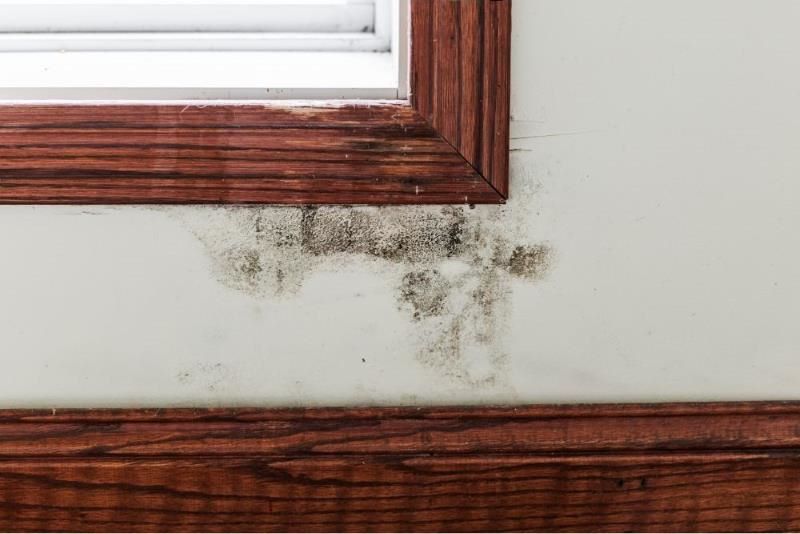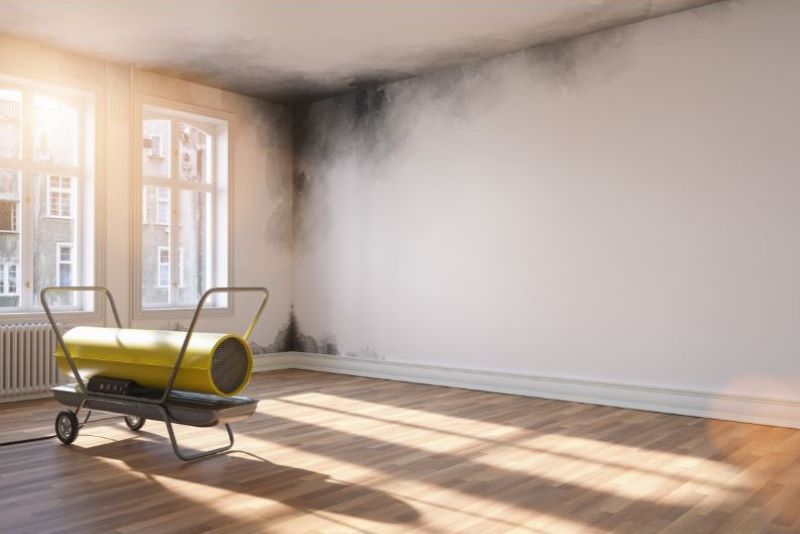Although “mold” and “mildew” are not a single thing, many people use them interchangeably. Both tend to smell musty and are categorized as fungus (organisms that produce spores) in science. Aside from their scientific classification, there are a few similarities between the two, yet they are also distinctive.
Spores of mildew and mold can be found everywhere. You’re dealing with an infestation of millions of microscopic spores by the time you notice mold or mildew. Continue reading to see the distinction between mildew vs mold.
Mildew
Mold in its early stages is referred to as mildew, and it normally grows quickly. The spores can travel by air, water, or insects. Porous, organic materials such as paper, wood, food, insulation, clothing, and carpet are all ideal growing environments for mold and mildew.
On surfaces such as shower walls, window frames, and other areas with high relative humidity, mildew can develop.
Hence, what are the fluffy, powdery spores that you observe on books and crates in the basement? It’s mildew. Don’t panic because it just affects the surface. You can treat it!
If mildew is present, it can be removed to prevent the spores from growing and harming nearby objects. Subsequently, check the ventilation in the room and consider installing a dehumidifier. An exhaust fan and humid air from bathrooms is a good idea. To avoid condensation, check the window seals around them.
Mold
After a house or other structure becomes saturated with water, mold begins to develop within 24 hours and can hide inside inner walls, resulting in structural damage. Organic material becomes infiltrated by mold after it grows on its surface.
Mold, on the other hand, can be slimy or fuzzy. Mold can be white, brown, black, gray, green, or blue in most cases.
Mold only becomes a problem when it develops on the inside. Mold rots the organic substances it penetrates over time. For this reason, structural damage caused by mold to houses and valuables needs mold remediation methods and expensive restoration.
Serious health problems can also be caused by mold. It creates allergies that have the potential to cause severe allergic reactions, such as sneezing, runny nose, red eyes, and skin rashes, which are symptoms of hay fever. Mold allergies can cause severe symptoms, triggering asthma attacks. Even those without allergies may experience irritation of the eyes, nose, throat, and lungs due to mold exposure.
Similarities Of Mildew Vs Mold

Mold
Mildew and mold are both types of fungi that appear filamentous, meaning they are multicellular and have branching tubular structures called hyphae that combine to produce a mass of entwined threads. Both of them can grow on anything in your house, and they both particularly adore moist, humid environments. Every surface, including food, shower, and ordinary paper, can support the growth of mildew and mold.
For individuals with preexisting respiratory problems, mildew, and mold may result in illness, even life-threatening ones.
Differences Of Mildew Vs Mold
The surface fungus known as mildew can be identified by a patch of white or gray fungus that is present on damp surfaces. A store-bought cleanser and a scrub brush can be used to treat mildew quickly and effectively. While mold, which can range in color from black to white, frequently arises from much larger infestations. This kind of fungus can look “fuzzy,” particularly when it’s on food. It could even appear slimy. Hazardous mold can grow in a house and cause allergies, asthma, irritated eyes, headaches, and even lung problems.
It’s crucial to treat the mold and mildew in your house. If you have recently experienced water damage, it is crucial to keep an eye out for any signs of mold and immediately take action right away to kill it completely to prevent its further growth.
Mildew Vs Mold Harmful Effects
Mildew and mold can be harmful to an individual’s health as well as the environment as a whole. Among the most harmful effects are:
Health Problems
Symptoms including coughing, wheezing, nasal congestion, and throat discomfort might be experienced by individuals who have certain allergies, sensitivities, or breathing-related conditions. As well as causing nosebleeds, migraines, and skin irritation including rashes or hives, it can also cause allergic reactions.
Mold can potentially cause mycotoxin toxicity or respiratory problems in more severe situations.
Persistent Musty Smell
A musty smell caused by mold and mildew can be difficult to get rid of. Treating the root of the mold problem has to be done to stop the mold from growing and spreading further, which is necessary for effectively removing smells.
Visible mold also can cause stains that require expensive repairs along with being unappealing and degrading fibers and surfaces.
Structural Damage
Over time, the spread of mildew and mold can lead to structural damage. Spores can grow in moist, humid environments if they are not treated. It can also permanently damage structures and spread quickly. Unfortunately, repairs are expensive and not usually possible once a building’s structural wood walls and drywall are affected.
To get rid of the most severe mold infestations, extensive demolition, and improvements are frequently needed.
Common Signs: Mildew Vs Mold

Mildew
Preventing problems early on is the most effective way to prevent mildew and mold, but it’s also critical to recognize the early warning signs of growth. Here are a few signs that you may have experienced water damage if you’re not sure:
- Cracking on paints or walls
- Degrading on paints or walls
- Musty smell
- Noticeable mold
- Reactions on the immune system
- Warping on paints or walls
Preventing Ways For Mildew and Mold Growth
Always be alert! Mildew and mold growth might occur rapidly and without many signs if you don’t have dehumidifying systems or reside in a humid environment. Take preventive actions to prevent common mildew and mold:
- Maintain a tidy environment.
- Dry any extra moisture, vacuum, and remove standing water.
- Take out any wet items from the flood, like furniture or loose area rugs.
- Maintain a humidity of less than 50% in your house by running dehumidifiers in damp areas.
- Spore disinfectant, such as bleach, on walls and floors, to reduce the formation of mildew and mold spores.
- Move clothes and towels from the washing to the dryer as soon as possible. Line-drying your clothes is another option; the sun will help destroy mold.
- After your washing machine cycle, leave the door propped open until it is completely dry.
- When using a shower in the bathroom, make sure to use fans and vents to help circulate air.
- Watch for any unexpected spikes in the water pressure.
- Look for signs of moisture on your ceiling.
- If your basement is accessible, look for any leaks in the pipes.
- If at all feasible, make sure that windows and other natural ventilation sources are kept open.
· Ensure that mechanical venting sources, for example, HVAC vents, are kept open and unobstructed.

